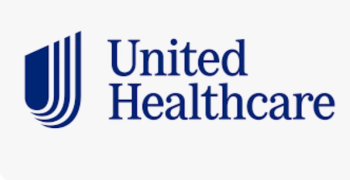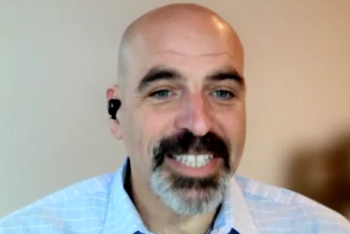
Improve your EOB with personalized information
Personalizing statements is good customer service.
As consumers enter the exchange environment, it is increasingly crucial for them to fully understand their health coverage. A recent study by the Kaiser Family Foundation showed that a majority of Americans (57%) feel that they don’t have enough information to understand health reform and how it will impact them.
One way plans can help their members is by having a straightforward and easy-to-understand Explanation of Benefits statement (EOB), either on paper or delivered in a digital format.
DALBAR, Inc. evaluates healthcare business practices and has been dissecting plans’ EOBs over the last four years. Its 2013 report notes that while the newly mandated Summary of Benefits Coverage for employer plans promotes a more clear understanding of policies, it doesn’t help consumers make better healthcare and financial decisions.
Plans must be consumer-centric in structuring their EOBs, the report says. Trends include presenting cost and payment data in a user-friendly, visual format and using conversational rather than technical language. Some plans have changed what they call their EOBs, referring to them as “Claims Reports” or “Personal Health Statements” instead.
“These name changes reflect efforts to help customers better understand their coverage while also providing the financial data traditionally presented to guide customers with expenses and payments,” the report says.
DALBARalso recommends that plans be mindful of the “5 C’s” of user-friendly health statements. According to the report, EOBs should:
â¾ Be comprehensive-Consumers want more information;
â¾ Be comprehensible-Allow members to understand what they’re looking at;
â¾ Reflect consumer choices-Inform them of options and the impact of their choices;
â¾ Show cost-savings-Let them know how they can stretch their dollars and how they saved money; and
â¾ Provide customer service-Guide members to receive further help.
1 Be comprehensive
Consumers need more information, and new government mandates expect increased transparency as well.
Humana’s SmartEOB-ranked number one by DALBAR this year with a score of 93.00 (benchmark is 76.31)-is based on Humana’s Smart Summary, a quarterly statement that consolidated members’ healthcare experiences. After receiving positive feedback, Humana decided to adopt the model in its EOB.
“Members would get it more frequently and understand their plan as it’s happening instead of after the quarter passed,” says Elizabeth Collier McGehee, business consultant, Enterprise Contact Process Management, Humana.
She says the simplest things often slip through the cracks. For example, Humana began including a claims total for the statement period, rather than listing them individually, as it had in the past.
“It’s something that was kind of simple that we hadn’t thought of, so it was one of those a-ha moments,” she says.
Plans must be careful not to overwhelm members, however. For example, EOB guides can be effective adjuncts to statement data, but can also create more confusion than support for the member.
Another strategy is highlighting items of relevance for members to determine what is most important and separate it from the background information.
“Give the background and the supporting information its proper place, but tell the journey after you’ve given people the destination,” says Eric Galvin, vice president of customer service at Cigna.
Cigna’s restructured EOB debuted in 2010, and was designed to resemble a retail receipt. The EOB was ranked third this year by DALBAR, scoring 88.75.
2 Be comprehensible
EOBs need to be both informational and pleasing to view, whether printed or delivered digitally. Humana’s SmartEOB offers visual aids such as charts and graphs to help its members understand the information better, says McGehee.
“We’ve had members write in and say they had no idea they used their plan so much, and seeing it all on paper with charts and graphs is helpful to know how to reduce spending,” she says.
Using plain language is also vital for allowing members to understand their EOBs. About 25 million Americans have limited English-speaking skills.
“It’s no secret the industry uses a lot of jargon. We have found a very positive response by not using a lot,” says Galvin.
He recommends plans communicate in ways that allow EOBs to be documents that anyone-especially amateurs to healthcare-can understand.
“The EOB is a mix of both medical and insurance terms all in one place,” Galvin says. “I try to think about using language that my mother or father would understand without any specialized training or learning.”
Over two-and-a-half years, Cigna has seen a one-third reduction in customer service calls related to EOBs, says Galvin. He chalks up the decrease to making EOB information more clear.
“We ultimately want to educate members about how their plan is helping them in different ways, and be part of that navigator for the customer,” he says.
In 2009, Aetna formed an editorial review board to improve the simplicity and consistency of the language used by the plan. Its EOB was evaluated in the process, and Aetna was able to transition it from a transactional report to a relationship building, transparency tool.
“We worked very hard to design a document that members find, not just understandable, but helpful as they make future healthcare decisions,” says Amy Saraco, EOB project owner, Aetna Service Operations.
Aetna created an easy-to-read document by writing to a fifth-grade level and keeping the language conversational.
“Using plain language is now part of Aetna’s culture,” says Brian Berkenstock, Aetna’s director of content services for digital media strategy and communications. “Being clear is part of our brand.”
Aetna’s upgraded EOB went live in 2011, and was ranked fifth by DALBAR this year, scoring 85.00. The plan continues to improve its EOB through member focus-group testing. Members are asked what certain words and phrases mean to help determine whether the plan’s messages are getting across.
“We really do want people to understand their coverage and costs,” he says.
3 Reflect consumer choices
It’s important to recognize the importance of choice and give members the option of making their own decisions.Humana runs an annual Maximize Your Benefits campaign where the EOB highlights specific drugs members are taking. If a brand drug is being taken, a message might be included to consider switching to a cheaper alternative.
Another strategy is to alert members if their medications are eligible for prescription mail-order service. This shows members how to make choices in order to save money and also acknowledges the consumer as an individual.
4 Show cost-savings
As the industry becomes more competitive, standing on the side of the consumer is critical. This can be achieved by highlighting cost savings and value on an EOB. Cigna wanted to make sure its members would understand at first glance that using their benefits drives savings for themselves, Galvin says.
“We wanted to quantify that so they understood the power of their benefits on a transactional, everyday basis,” he says. “Our EOB is part education about what they experienced, part education about how their benefits work, and it also drives a very clear view of the value their plan has brought to them.”
DALBAR uses Cigna’s EOB as an example of how to utilize the language of cost savings, pointing out its frequency used throughout. It also uses both dollar amounts and percentages to identify savings; promotes additional savings options by calling or accessing online; and uses graphics to highlight savings.
5 Provide customer service
EOBs are often the most viewed document by members, so it’s important that they are helpful, accessible and personal.
Cigna allows its members to access their EOBs across multiple channels. Paper statements will arrive by mail, but EOBs can also be viewed at
“The EOB is just one element in a comprehensive customer service strategy,” Galvin says. “It’s really a complimentary item to a comprehensive view.”
Humana includes personalized messaging in its EOBs. An alert is added for diabetic members who haven’t had their annual glaucoma screening reminding them to schedule an appointment. The reminders can help reduce gaps in care.
“We found that members actually pay attention more when they can see that we know who they are and are personalizing the information to them,” McGehee says.
Newsletter
Get the latest industry news, event updates, and more from Managed healthcare Executive.






















































